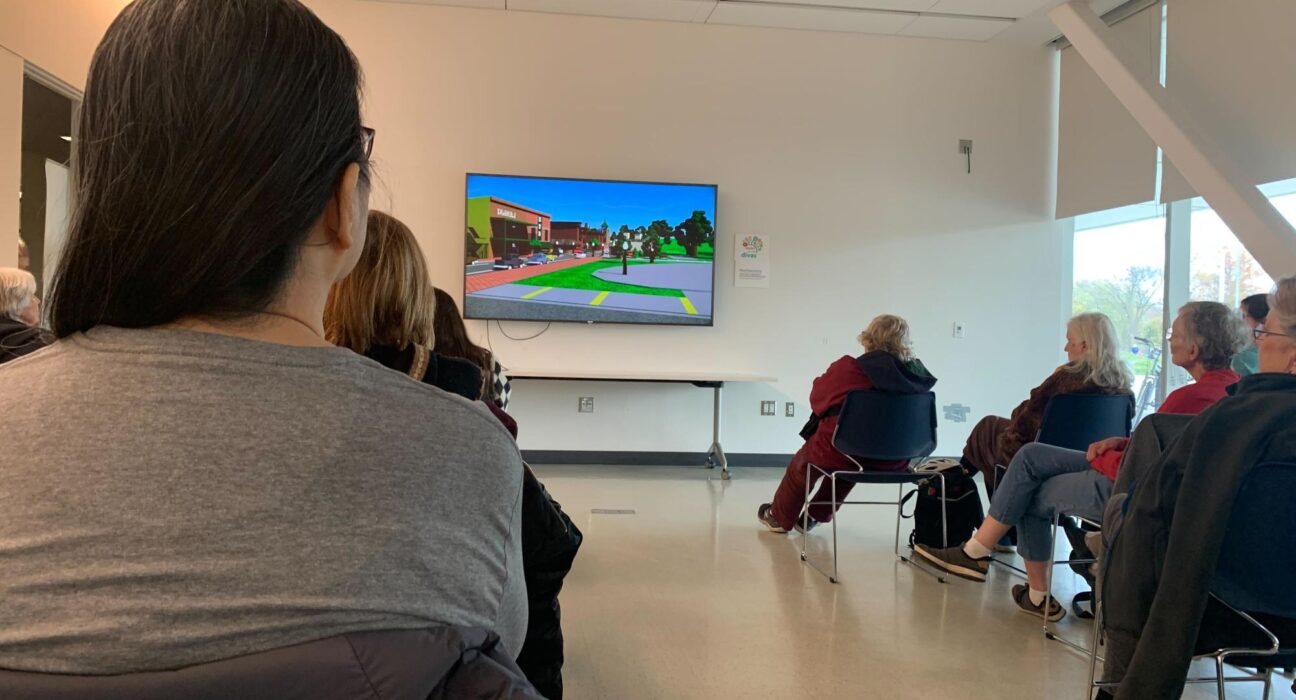About 30 people gathered at Robert Crown Library to watch independent short films directed by Indigenous artists on Sunday afternoon as part of the First Nations Film and Video Festival. The organization hosts two film festivals each year at different locations in the Chicago area.
The festival aims to showcase and celebrate the art of Indigenous filmmakers of all skill levels. According to their website, films are directed by Indigenous and Native American filmmakers from the United States, Canada, Central America, South America and Mexico.
Ernest M. Whiteman III, co-director of the FNFVF, hosted Sunday’s event. He said the purpose of the festival was to display the creative depth of Indigenous filmmakers, particularly in behind-the-scenes film production.
“Natives are not a monolith,” Whiteman said after the screening. “We have all these different perspectives.”
Organizers screened a diverse selection of films across different mediums. One film, “Tiny,” was a claymation reimagining of the speaker’s childhood in her first home on the water. Another, “Rabbit Stories – ᏥᏍᏚ ᏗᎧᏃᎮᏢᏅ,” was a 3-D animated story about a boy’s grandmother, narrated entirely in Cherokee. A third film, “Paddle Tribal Waters,” was a documentary about a program that taught Indigenous youth how to paddle and to be the next generation of river stewards.
Jeanie Brabeck, a Rogers Park resident who attended Sunday’s event, said she is an avid attendee of film festivals. She particularly liked this festival because of its emphasis on Indigenous perspectives in the creative process.
“I love this festival because of centering Native voices, doing what they do — not just focusing on the Native people, but using the director’s voice to do whatever creative work they can do,” Brabeck said.
Brabeck has led numerous service trips with her church to Indigenous reservations in North and South Dakota. She said she came to the festival “as a listener,” hoping to learn more about the difference between Indigenous and “settler” perspectives.
Evanston resident Margaret Stapleton said this was her first time attending a film festival like this one. She said she was trying to “vacuum up information” with each short film screened.
“There’s so much for white folks to learn,” Stapleton said. “And I love everything I learn about the Native American perspective on the universe and on people. It influences me. It’s influenced the way I think about the way I think about the world because I’m a Midwestern, urban person.”
The film festival will continue Monday night at Northeastern Illinois University with a different selection of films. The final day of the festival will be held on Nov. 10 at the Music Box Theatre in Chicago, where the film “Hey Viktor!” will be screened.
Whitehead ended Sunday’s event by emphasizing the need to do more to support Indigenous creatives, beyond consuming their art.
“Just watching the films isn’t enough,” Whitehead said. “You’ve gotta be active.”
Email: [email protected]
Related Stories:
—‘Showing a mirror’: Indigenous Peoples’ Day celebration at Mitchell Museum sparks reflection
—Photographer Rosalie Favell spotlights Indigenous artists in Block Museum exhibit
—Reel Thoughts: Must-see films from the Chicago International Film Festival

